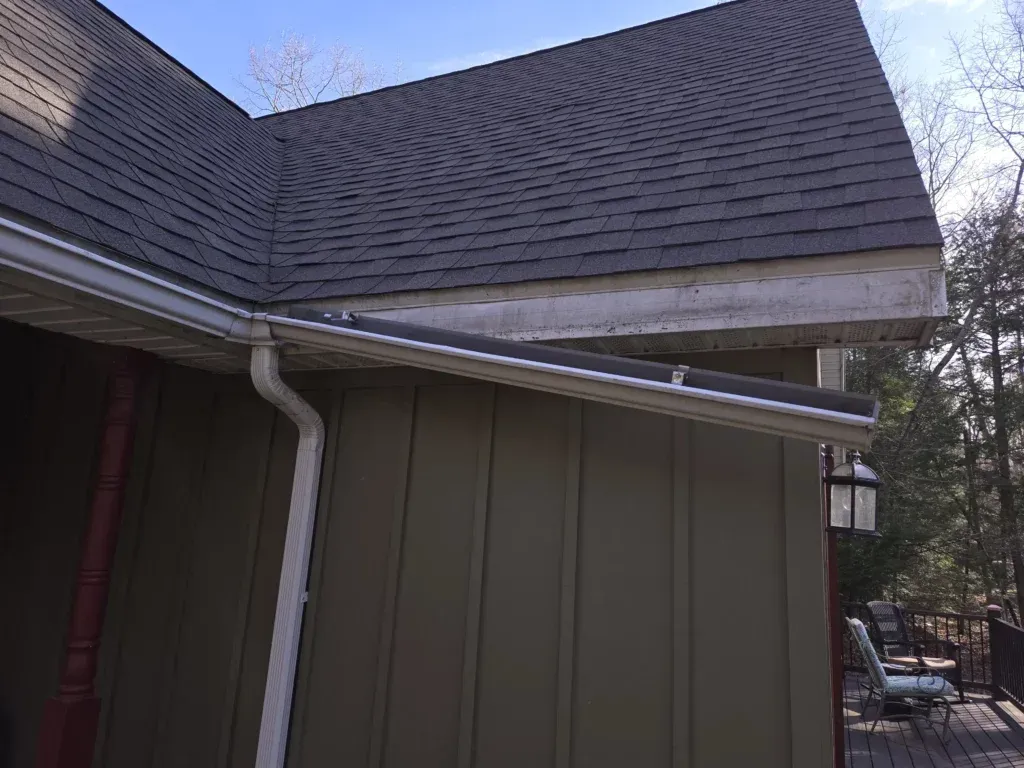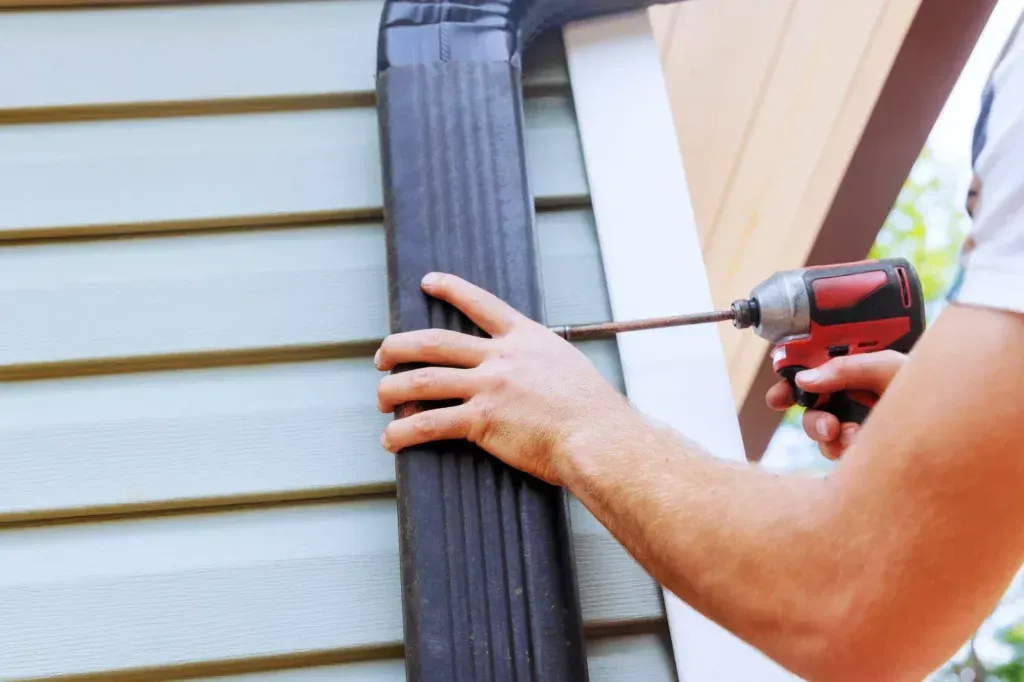Top 5 Signs Your Gutters Were Damaged by Storms
Recent storms in Wichita have left many homeowners concerned about potential damage to their gutters. Strong winds, hail, and heavy rainfall can take a toll on your home’s gutter system, leading to costly repairs if left unchecked.
Identifying storm damage early can save you thousands of dollars in repairs and prevent water damage to your home’s foundation, walls, and landscaping. Your gutters play a crucial role in protecting your home by directing rainwater away from your property.
As Wichita’s trusted gutter experts for years, we’ve helped countless homeowners assess and repair storm damage to their gutter systems. We’ll show you the key signs that indicate your gutters need professional attention after severe weather events.
[Storms happen, and sometimes damage is inevitable. Don't let your home be damaged any more then it has been! See our gutter repair services for more]
Top 5 Signs Your Gutters Were Damaged by Recent Wichita Storms
Recent storms in Wichita can wreak havoc on your home’s gutter system, potentially leading to costly water damage if left unchecked. Taking prompt action when you spot damage helps protect your home’s foundation and structural integrity.
Visible Sagging or Detached Gutters
Strong winds and heavy rain can loosen gutter fasteners or pull sections away from your home. Look for gaps between your gutters and fascia board or areas where the gutters appear to droop or sag.
Fallen tree branches and debris accumulation add extra weight, causing fasteners to pull away from the house. This creates uneven slopes that prevent proper water drainage.
Warning Signs:
- Visible gaps between gutters and house
- Gutters sloping at unusual angles
- Loose or missing fasteners
- Sections pulling away from mounting points
Leaks and Water Overflow During Rainfall
Watch your gutters during rainfall to identify problematic areas. Water should flow smoothly through the system and exit through downspouts.
Overflowing gutters indicate blockages or improper slope angles. You may notice water cascading over the sides instead of through downspouts.
Check for water stains or streaks on siding beneath gutter sections. These marks often reveal hidden leaks at seams or corners.
[That being said, you may want to prepare your gutters for rain beforehand]
Noticeable Dents, Cracks, or Holes
Inspect your gutters for physical damage after hailstorms. Large hail can create dents or punch holes through aluminum gutters.
Small cracks may form at stress points, particularly near corners and seams. These can expand over time due to freeze-thaw cycles.
Common Impact Damage:
- Circular dents from hail
- Split seams between sections
- Punctures from fallen branches
- Cracked corners or connection points
Peeling Paint or Rust Around Gutters
Paint bubbling or peeling near gutters signals water is not flowing properly through the system. Check for rust spots on metal gutters, especially at seams and corners.
Water stains on exterior walls beneath gutters indicate leaks. These stains often appear as dark streaks or discolored patches.
Rusty fasteners or brackets need immediate replacement to prevent sections from falling.
Water Pooling Near the Foundation
Check your yard after rain for standing water near your home’s foundation. Properly functioning gutters direct water away from the house.
Saturated soil and eroded landscaping around downspouts suggest drainage issues. Look for washed-out areas or new depressions in the ground.
Signs of Poor Drainage:
- Standing water near foundation
- Eroded soil around downspouts
- Basement dampness or flooding
- Muddy splashback on siding

What To Do If Your Gutters Are Storm Damaged
Quick action after storm damage can prevent costly repairs and protect your home’s foundation. Take these steps to assess and address gutter problems promptly.
How to Perform a Gutter Inspection After Storms
Start by examining your gutters from ground level for visible damage like sagging sections or separated joints. Look for dents, holes, or areas where gutters have pulled away from your house.
Use a sturdy ladder and wear non-slip shoes to inspect gutters up close. Check all fasteners, brackets, and downspouts for loose or missing components.
Clear any debris that storms have deposited in your gutters. This allows you to spot less obvious damage and prevents additional strain on weakened sections.
Document all damage with photos, this will help when filing insurance claims or discussing repairs with professionals.
The Importance of Timely Gutter Repairs
Small issues can quickly escalate into major problems if left unaddressed. A minor leak today could lead to rotted fascia boards or foundation damage tomorrow.
Water overflow from damaged gutters can erode your landscape and create dangerous ice patches in winter. It may also seep into your basement or crawl space.
Common consequences of delayed repairs:
- Foundation damage
- Basement flooding
- Fascia board rot
- Landscape erosion
- Siding damage
[Don't wait! Get your Wichita gutters repaired]
When to Call Wichita Gutters for Professional Help
Contact Wichita Gutters immediately ((316) 350-7115) if you spot separated seams, large dents, or gutters pulling away from your house. These issues require professional attention.
Professional help is essential when damage occurs in hard-to-reach areas or affects multiple sections of your gutter system.
Call us if you notice:
- Multiple leaking joints
- Severe sagging
- Damaged downspouts
- Bent or twisted sections
- Missing hardware
Free inspections are available to assess storm damage and provide repair estimates. Our team responds quickly to prevent additional damage to your home.

Gutter Preperation Frequently Asked Questions
What are the indicators of storm damage to gutters that homeowners should look for?
Look for visible dents, bends, or gaps in your gutter sections. These damages often appear after hail or strong winds.
Check for sagging sections or gutters pulling away from your roofline, which can indicate loose fasteners or damaged mounting brackets.
Watch for water overflow during rain, as this may signal clogs from storm debris or misaligned gutter sections.
How can I determine if my gutters need repair or replacement after a storm?
Examine your gutters for rust spots, holes, or cracks that developed after severe weather.
Test water flow by running a garden hose into the gutters. This reveals leaks and improper drainage.
If more than 50% of your gutter sections show damage, replacement might be more cost-effective than repairs.
What steps should I take if I find storm damage on my gutters?
Document all visible damage with photos for insurance purposes.
Contact a professional gutter service like Wichita Gutters for a thorough inspection and damage assessment.
Secure any loose sections temporarily if possible to prevent further damage.
Are there specific risks to ignoring gutter damage caused by severe weather?
Water can seep into your home’s foundation when damaged gutters fail to direct water away properly.
Your basement faces increased flood risks due to improper drainage.
Damaged gutters may cause fascia board rot and roof damage, leading to expensive repairs.
How often should gutters be inspected for damage, particularly after storms?
Inspect your gutters immediately after severe storms with high winds or hail.
Schedule professional inspections twice yearly, typically in spring and fall.
Additional checks are recommended after major weather events specific to the Wichita area.
What services does Wichita Gutters offer for storm-damaged gutter systems?
We provide free storm damage assessments and detailed repair estimates.
Our services include gutter repair, replacement, realignment, and complete system installations.
We work directly with insurance companies to streamline your storm damage claims.
